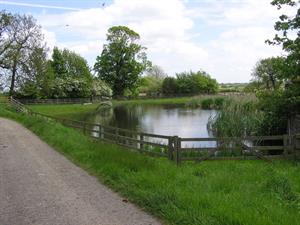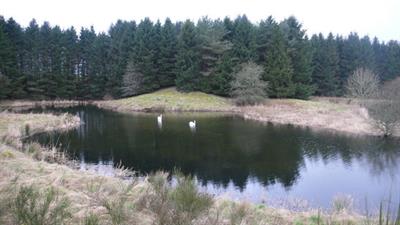
PUMPA - SMART LEARNING
எங்கள் ஆசிரியர்களுடன் 1-ஆன்-1 ஆலோசனை நேரத்தைப் பெறுங்கள். டாப்பர் ஆவதற்கு நாங்கள் பயிற்சி அளிப்போம்
Book Free DemoFarm ponds are one of the techniques which support water conservation. Farm ponds store the rainfall or the surface runoff from the surrounding areas. It solely depends upon the rainfall present in the region.
If the rainfall is not stored, most rainfall runs off the ground. The runoff causes water loss and washes away the fertile topsoil along with it. Farm ponds improve the agricultural water, as there is capture, storage and provision of water for irrigation.


Farm ponds
The farm ponds help the farmers store water and use it for irrigation. Farm ponds can serve to function as:
- A water source for irrigation
- Recharges groundwater
- Provides economic and environmental benefits.
The layout of a farm pond:
The farm pond is a dugout structure with a definite shape and size. They have proper inlet and outlet structures for collecting the surface runoff that flows from the farm area. Farm ponds are dug in the ground in a naturally low-lying area.
A pond of about 10 \ metres by 10 \ metres with 3 \ metres depth is an ideal size. The water is stored and used for irrigation during prolonged periods.
Advantages of Farm Ponds:
1. It provides water for the growing crops without waiting for rainfall.
2. It provides water for irrigation purposes even when there is no rain.
3. It reduces the erosion of soil.
4. The soil dug out or excavated can enrich the soil in fields and levelling lands.
5. It promotes fish rearing.
6. It provides water for domestic purposes and livestock.

Farm pond
7. It collects the excess runoff during the rainy season.
8. It conserves the soil as well as moisture.
Reference:
https://upload.wikimedia.org/wikipedia/commons/6/65/Farm_Pond._-_geograph.org.uk_-_178101.jpg
https://upload.wikimedia.org/wikipedia/commons/8/88/Lagg_Farm_pond_-_geograph.org.uk_-_715243.jpg
https://en.wikipedia.org/wiki/File:Bradwall-springbank-farm-pond.jpg